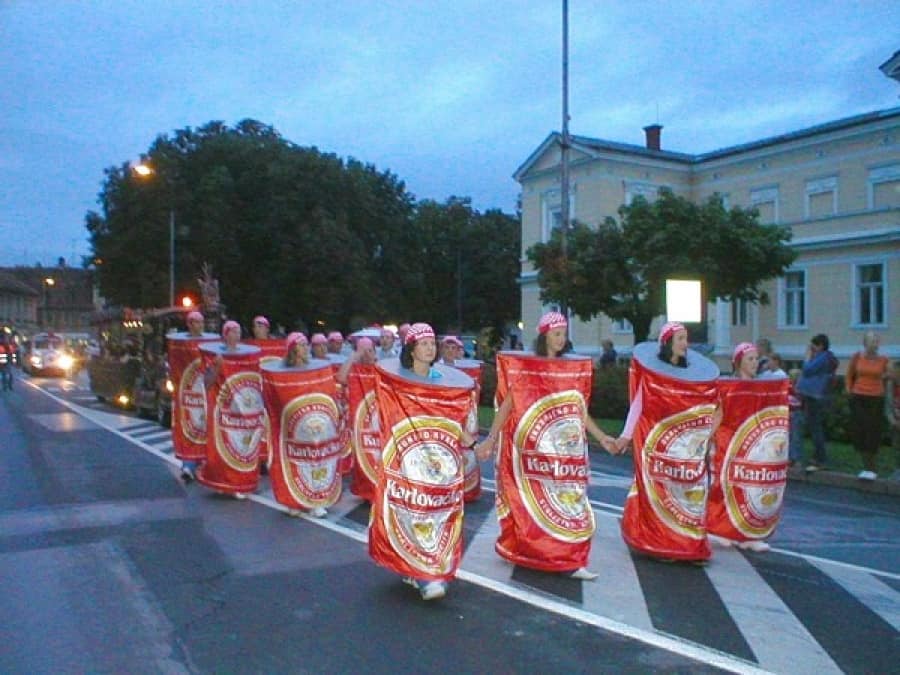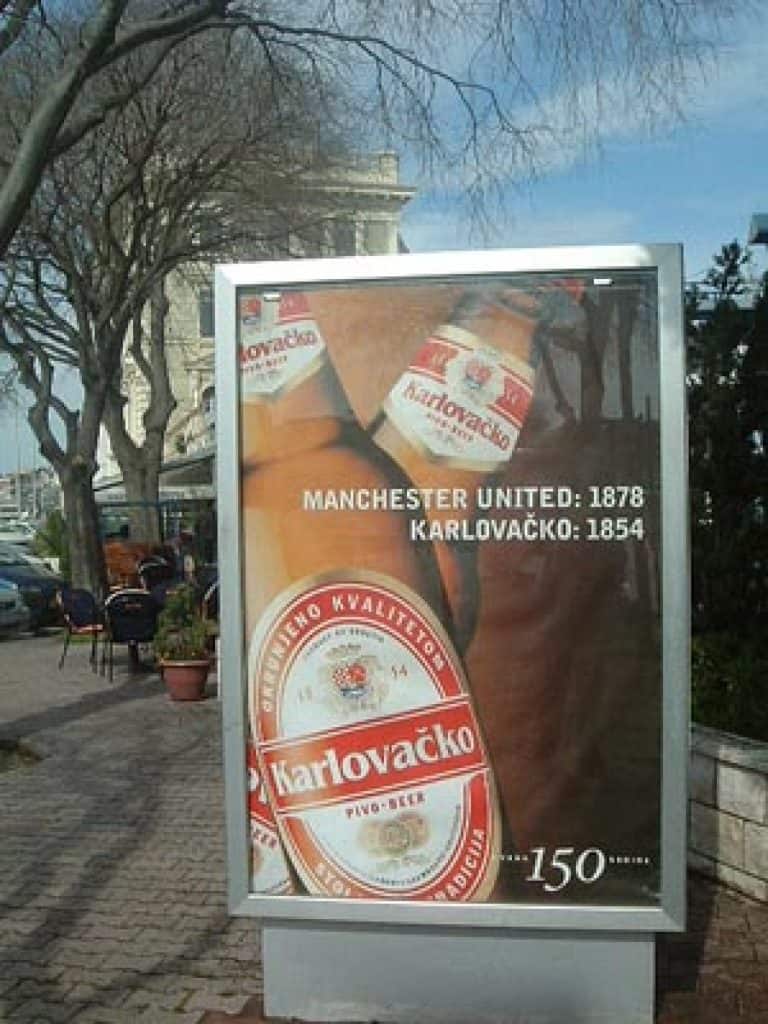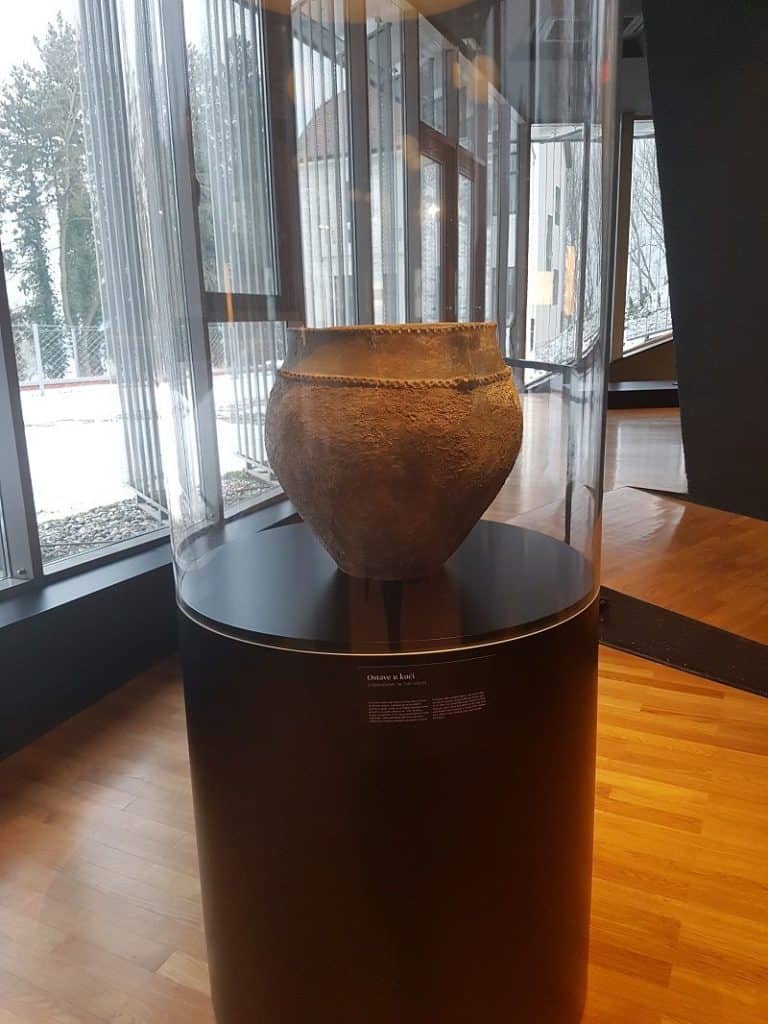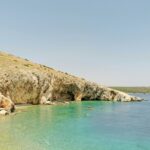How much is a beer in Croatia? What are the best local brands? Where are the festivals and what is the craft beer scene like? Meet the Croatian beer scene.
- The all-important question: How much is a beer in Croatia?
- Draught or bottled beer in Croatia?
- Buying beer in supermarkets and recycling.
- A beer-drinking tradition dating back 5,000 years.
- What are the most popular local brands?
- Beer festivals in Croatia.
- The Croatian craft beer scene.
- Beer and driving.
- Some of the best Croatian beer adverts.
The all-important question: How much is a beer in Croatia?
It is one of the most-searched questions for tourists coming to visit as they make their preparations – how much is a beer in Croatia? Rightly or wrongly, the price of a beer is taken by many as a barometer of affordability on holiday, with much of the spending money allocated to beer and other alcohol consumption. So let’s get straight to the crux of the matter.
Compared to the UK and much of Western Europe, the good news is that beer in Croatia is very affordable. How much you pay depends partly on the brand you choose, but much more on the location where you drink it.
The most expensive (0.5 litre) beer I have had, perhaps not surprisingly, was on Stradun in Dubrovnik, which was 55 kuna (about US$8.25), and the cheapest I have paid have been in numerous locations in continental Croatia – Osijek, Karlovac, Varazdin and – rather surprisingly – Zagreb.
Location, location, location. If you are looking for a cheaper pint, the obvious advice is to stay away from the tourist traps. In a rather unorthodox overview of the price of a pint, TCN’s Joe Orovic came up with an intriguing formula for beer prices and location last year:
3.2 kunas per .1L of draft beer, prices increasing with proximity to hotspots.
My experience is that the standard price on the coast is between 15 and 25 kuna. This increases in more popular spots. Apart from the 55 kuna on Stradun, I once paid 38 kuna on the Hvar waterfront.
Two little tips that might help you stretch the beer budget a little further. Many bars in Croatia reward loyalty, with the house bringing the table a round of free beers after you buy the third round. And the best sentence you can learn in Croatian if you want to try and reduce the bar bill is – Ima li popusta za domace? (Is there a discount for locals, the last word pronounced do-ma-cheh). Obviously your ability to enunciate the sentence as though you have lived in the town all your life will increase your chances of success. And while this will not work every time, the fact that you know of the possible existence of a local discount can only help.
Draught or bottled beer in Croatia?
Beer generally comes in two sizes in draught form – the trust half-litre or the ‘tri deca’, or 0.3l. I have seen it served on request as a ‘dva deca’, or 0.2l, but I have never figured out what to do with a beer that small.
The bottled versions usually come in 0.5l and 0.33l, as well as the famous Karlovacko Twist Off, whose 0.25l contents are just enough to refresh you after you twist off the cap without the need for a bottle opener. As in most places in the world, the fancier the location, the smaller the bottle.
So is it better to order bottled or draught beer in Croatia? It is, of course, a very individual choice, but one should note that many bars on the coast only have draught beer on offer during the tourist season. I personally have found the quality of draught beer in Croatia to be very erratic and am very much a bottle fan. But that is just me.
Buying beer in supermarkets and recycling
Buying beer in bars is one thing, but what about the supermarkets? There is a good range of choice when it comes to the supermarket offer, with many Croatian and international brands available in both cans and bottles.
Cans tend to be more expensive, starting around 9 kuna a piece, which bottles start at around 6 kuna, BUT you need to pay a refundable deposit of around 1 kuna for each bottle (the amount varies). If you are buying a case of beer in bottles, you will also need to pay a refundable deposit in the region of 30 kuna as well.
Recycling is still not very well-developed in Croatia, but you can now bring back bottles and cans to supermarkets and other outlets for a recycling refund – 50 lipa per can.
A beer-drinking tradition dating back 5,000 years
The tradition of drinking beer in Croatia dates back a surprisingly long time, some 5,000 years in fact, according to this beer pot found in Vucedol in eastern Slavonia.
And a few millennia later in Roman Pannonia, as the region was then called, beer was very popular. Historian Ammianus Marcellinus noted that Emperor Valens, born in Cibalae – Vinkovci today, loved the beer so much that he was called Sabaiarius (beer drinker or beer belly). You can read more about the fascinating Slavonian beer story of 5,000 years here, including the oldest brewery in Croatia, which is still producing goodness to this very day in Osijek.
What are the most popular local brands?
Enough history – I can see you are thirsty. So what are the most popular local brands? We will look at the craft beer scene in a minute, but let’s deal first with the biggest mainstream brands:
Ozujsko
The biggest brewery in the market is Zagrebacka Pivovara, which was established in 1892 on Ilica, and which produces the most widely drunk beer in Croatia, Ozujsko. Known affectionately as ‘Zuja’ I will confess that I am not a fan at all, and I usually order tea when it is Zuja or nothing. But that is, of course, a personal opinion, and I invite you to try Zuja and come to the same conclusion. They have a huge marketing budget as well as generous deals of free awnings for cafes, in exchange for market presence, which helps explain why they are the best-sellers.
But their promotional adverts (see below) are awesome. But then they have to be…
And while I am not a fan of Zuja, Zagrebacka does actually have a good range of other beers which they brew under licence. These include StaroPramen, Niksic, Becks, Stella Artois, Leffe, Corona, Hoegaarden, Lowenbrau, and Miller Genuine Draft. The range also includes Tomislav dark beer, which many consider to be the best beer in Croatia. The brewery joined the MolsonCoors group in 2012.
Karlovacko

The pride of Karlovac is Karlovacko, Croatia’s second most popular beer, and one which managed to position itself very well with football through its Karlovacko Corner concept during major football championships.
Speaking of football, Karlovacko gets my vote for the best billboard advert for this one below back in 2004 during its 150-year anniversary. Heineken bought Karlovacko recently. Karlovacko is also the official beer partner of Hajduk Split. This has helped increase its popularity in Dalmatia.

Pan
The biggest brewery in the north of Croatia is Pan in Koprivnica, which is now owned by Carlsberg. I was there a few years ago on a foodie tour which included a visit to Vegeta across the road. I was surprised to see just how automated the whole process was. Just four people operating production, where over 100 had been working there not too long ago. While Pan is the main product, Zlatni (or Golden) Pan is a much smoother product.
Lasko
A Slovenian beer, but widely available in Croatia, Lasko was also recently bought by Heineken. My favourite beer here by a country mile, Lasko used to have a production facility in Split until about 10 years ago.
Tomislav
Part of the Zagrebacka Pivovara portfolio, Tomislav is a powerful dark beer. At 7.3%, it is the second strongest beer in Croatia after Gricka Vjestica at 7.5%.
Velebitsko
One of Croatia’s more popular beers, which takes its name from the Velebit mountain. Brewed in Gospic, Velebitsko comes in light (5.1%) and dark (6.0%) varieties.
Beer festivals in Croatia
The craft beer revolution has really taken off in Croatia (see more below), and an explosion of festivals has followed suit. Beer festivals are appearing all over the country, with over 20 in Croatia this year alone. Here is a link to the biggest and most interesting. Some are very localised, and the good news is that they are nicely spread all over the country.
The Croatian craft beer scene
The traditional beer seen may have changed little in recent times (apart from the acquisitions by the likes of Heineken and MolsonCoors), but there has been a quiet revolution in one previously non-existent part of the industry – craft beer.
I didn’t follow the early origins of the craft beer revolution in Zagreb, but a key early catalyst was the success of Zmajska Pivovara in Zagreb. Soon after starting in 2014, Ratebeer named it 9th best beer in the world. Not a bad start!
My first proper experience of Croatian craft beer was in Istria where I visited the San Servolo brewery in Istria. Their red, light and dark beers quickly took off all over Croatia, and the restaurant was quite an experience. Beer soup, beer goulash and a most unusual dessert – beeramisu!
And then I heard of a Polish lady living on the same island as me on Hvar. She was apparently making her own beer, the first craft beer on a Croatian island. And so it proved – Anna’s range of Vunetovo beers are increasingly popular. Not far behind on the island craft beer scene were two Norwegian brewers with property on Vis.
Perhaps the biggest addition to the Croatia craft beer scene in recent years is The Garden Brewery. Linked to the iconic Garden Festival, its British owners have not only built an impressive portfolio, but they also now export to more than 25 counties.
My favourite craft beers? Although not an expert, I concur with RateBeer on their choice of best craft beer in Croatia. Barba in Split, from LAB Barba, who also do a great one called Englez (Englishman). Nova Runda is always a good bet, and I adore Plavusa (the Blonde) from the two Zadar ladies at Brlog.
International beer site Rate Beer has come up with its top 50 Croatian beers. Did your favourite make the list? There is information on each beer on the list. A great way to start with your Croatian craft beer journey.
Craft beer bars in Croatia
As one would expect with the expanding craft beer scene, dedicated bars have followed. Among the best in Zagreb are Tolkein’s House and Craft Room, both on Opatovina in the Upper Town. Leopold’s and To Je To are good bets in Split. The aforementioned San Servolo in Buje is a great choice for Istria. If anyone has any additional recommendations, please send to paul@total-croatia-news.com and I will add.
Beer and driving
Don’t drink and drive. The law has a zero-tolerance policy for drivers under 25 so the blood alcohol level (BAC) limit is 0%. The BAC limit for drivers over 25 years old is 0.5%. Recently, there has been a bigger focus on drink driving in Croatia, with more checks and higher fines. There is one good way to ensure you do not fall foul of the law…
Some of the best Croatian beer adverts
The beer may be terrible, but there is nothing to compare to the genius of Ozujsko advertising. Croatian beer adverts in general are very creative – here is a selection of the very best.









